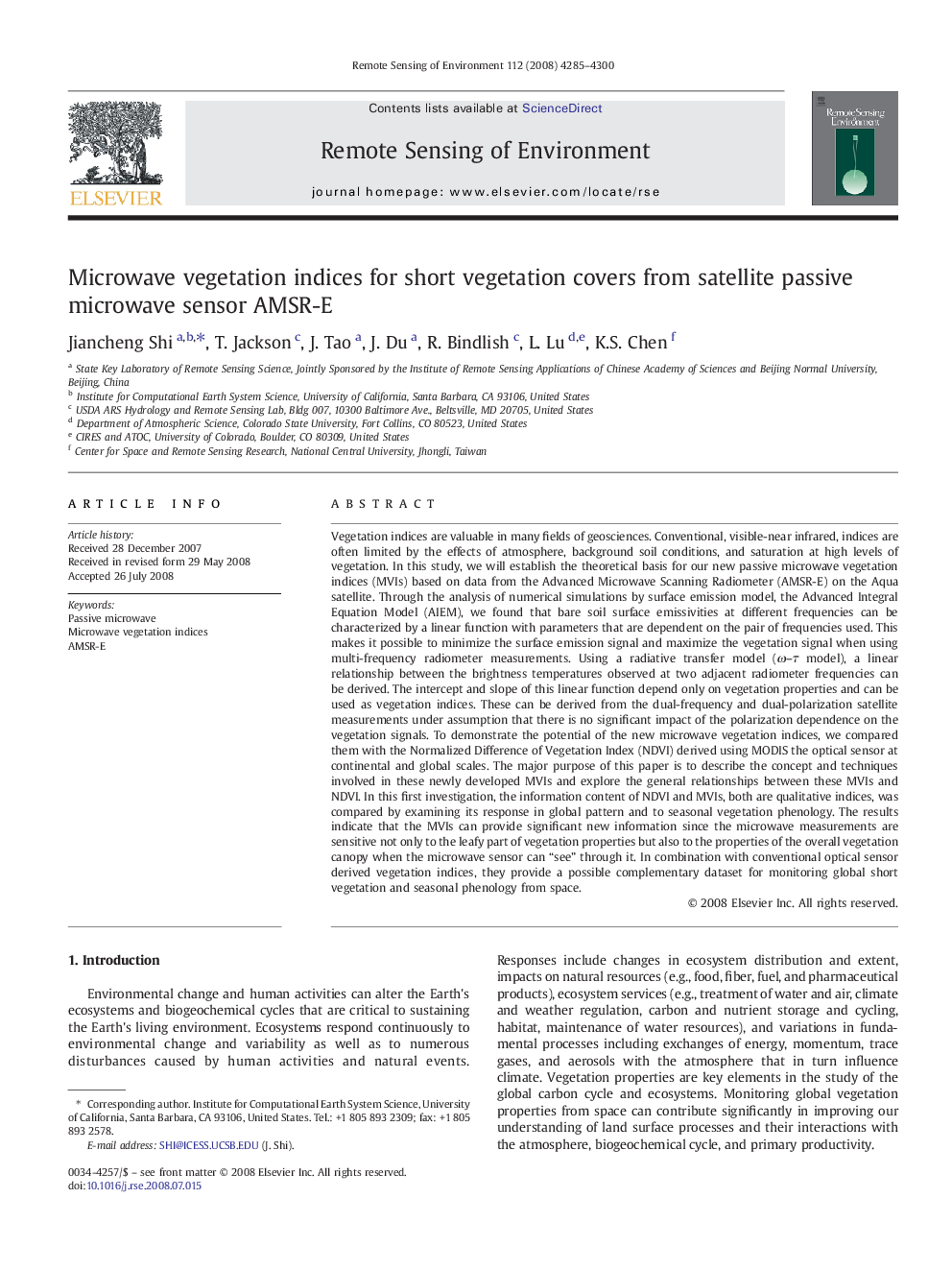| کد مقاله | کد نشریه | سال انتشار | مقاله انگلیسی | نسخه تمام متن |
|---|---|---|---|---|
| 4459862 | 1621322 | 2008 | 16 صفحه PDF | دانلود رایگان |

Vegetation indices are valuable in many fields of geosciences. Conventional, visible-near infrared, indices are often limited by the effects of atmosphere, background soil conditions, and saturation at high levels of vegetation. In this study, we will establish the theoretical basis for our new passive microwave vegetation indices (MVIs) based on data from the Advanced Microwave Scanning Radiometer (AMSR-E) on the Aqua satellite. Through the analysis of numerical simulations by surface emission model, the Advanced Integral Equation Model (AIEM), we found that bare soil surface emissivities at different frequencies can be characterized by a linear function with parameters that are dependent on the pair of frequencies used. This makes it possible to minimize the surface emission signal and maximize the vegetation signal when using multi-frequency radiometer measurements. Using a radiative transfer model (ω–τ model), a linear relationship between the brightness temperatures observed at two adjacent radiometer frequencies can be derived. The intercept and slope of this linear function depend only on vegetation properties and can be used as vegetation indices. These can be derived from the dual-frequency and dual-polarization satellite measurements under assumption that there is no significant impact of the polarization dependence on the vegetation signals. To demonstrate the potential of the new microwave vegetation indices, we compared them with the Normalized Difference of Vegetation Index (NDVI) derived using MODIS the optical sensor at continental and global scales. The major purpose of this paper is to describe the concept and techniques involved in these newly developed MVIs and explore the general relationships between these MVIs and NDVI. In this first investigation, the information content of NDVI and MVIs, both are qualitative indices, was compared by examining its response in global pattern and to seasonal vegetation phenology. The results indicate that the MVIs can provide significant new information since the microwave measurements are sensitive not only to the leafy part of vegetation properties but also to the properties of the overall vegetation canopy when the microwave sensor can “see” through it. In combination with conventional optical sensor derived vegetation indices, they provide a possible complementary dataset for monitoring global short vegetation and seasonal phenology from space.
Journal: Remote Sensing of Environment - Volume 112, Issue 12, 15 December 2008, Pages 4285–4300